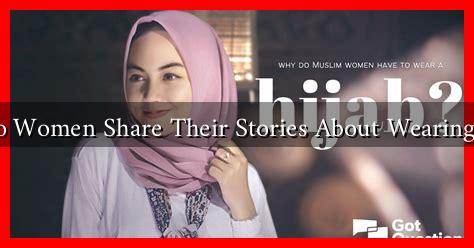-
Table of Contents
How Do Women Share Their Stories About Wearing Hijabs?
The hijab, a traditional headscarf worn by many Muslim women, is often a symbol of faith, identity, and cultural heritage. However, the experiences of women who wear hijabs can vary widely, influenced by personal beliefs, societal norms, and cultural contexts. This article explores how women share their stories about wearing hijabs, highlighting the diverse narratives that emerge from their experiences.
The Power of Personal Narratives
Personal narratives are a powerful way for women to express their experiences with hijab-wearing. These stories often serve multiple purposes:
- Empowerment: Sharing personal stories can empower women by affirming their choices and identities.
- Awareness: Narratives can raise awareness about the challenges and triumphs faced by hijab-wearing women.
- Community Building: Sharing experiences fosters a sense of community among women who may feel isolated in their hijab-wearing journey.
For instance, platforms like Hijabi Hub provide a space for women to share their stories, creating a supportive environment where they can connect with others who have similar experiences. These narratives often highlight the intersection of faith, culture, and personal choice, showcasing the complexity of wearing a hijab in different contexts.
Social Media as a Platform for Storytelling
In the digital age, social media has become a vital platform for women to share their hijab stories. Hashtags like #HijabStories and #MyHijabMyChoice have gained traction, allowing women to narrate their experiences visually and textually. This trend has several implications:
- Visibility: Social media increases the visibility of hijab-wearing women, challenging stereotypes and misconceptions.
- Global Reach: Women from diverse backgrounds can share their stories, creating a global dialogue about hijab-wearing.
- Support Networks: Online communities provide support and encouragement, helping women navigate their hijab journeys.
For example, the Instagram account @hijabfashion has over 1 million followers, showcasing the fashion and style of hijab-wearing women while also sharing their personal stories. This account not only promotes fashion but also highlights the individuality and creativity of women who wear hijabs.
Case Studies: Diverse Experiences
To understand the varied experiences of hijab-wearing women, it is essential to look at specific case studies. Here are a few examples:
- Fatima, a college student in the U.S.: Fatima shares her story of wearing a hijab in a predominantly non-Muslim environment. She discusses the challenges of facing stereotypes but also highlights the support she receives from friends and faculty who respect her choice.
- Amina, a fashion blogger in the UK: Amina uses her platform to challenge the notion that hijabs are limiting. She shares her journey of embracing her identity while promoting fashion that reflects her style and faith.
- Leila, a refugee in Germany: Leila’s story focuses on the intersection of her refugee status and her hijab. She discusses the additional challenges she faces but also emphasizes the strength she derives from her faith and community.
These case studies illustrate that the hijab is not merely a piece of clothing; it is intertwined with personal identity, cultural heritage, and social dynamics.
Statistics and Research Insights
Research indicates that the experiences of hijab-wearing women are often shaped by societal attitudes. A study conducted by the Pew Research Center found that:
- Approximately 62% of Muslim women in Western countries report facing discrimination based on their hijab.
- Women who wear hijabs are more likely to feel a sense of belonging within their communities compared to those who do not.
These statistics underscore the importance of sharing stories to combat discrimination and foster understanding.
Conclusion
Women share their stories about wearing hijabs through personal narratives, social media platforms, and community engagement. These stories serve as powerful tools for empowerment, awareness, and connection. By sharing their experiences, hijab-wearing women challenge stereotypes, promote understanding, and build supportive networks. As society continues to evolve, the voices of these women will play a crucial role in shaping perceptions and fostering inclusivity.
In summary, the act of sharing hijab stories is not just about clothing; it is about identity, resilience, and the celebration of diversity. By listening to these narratives, we can gain valuable insights into the lives of hijab-wearing women and work towards a more inclusive society.

